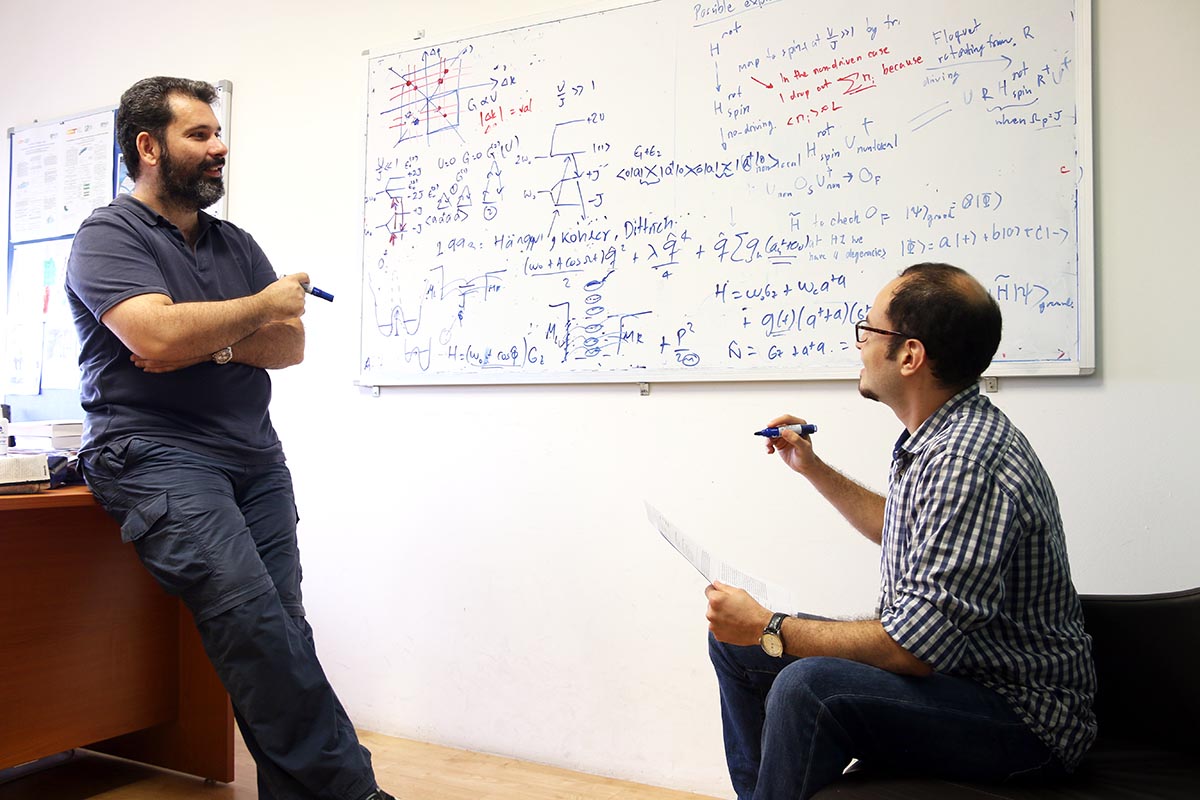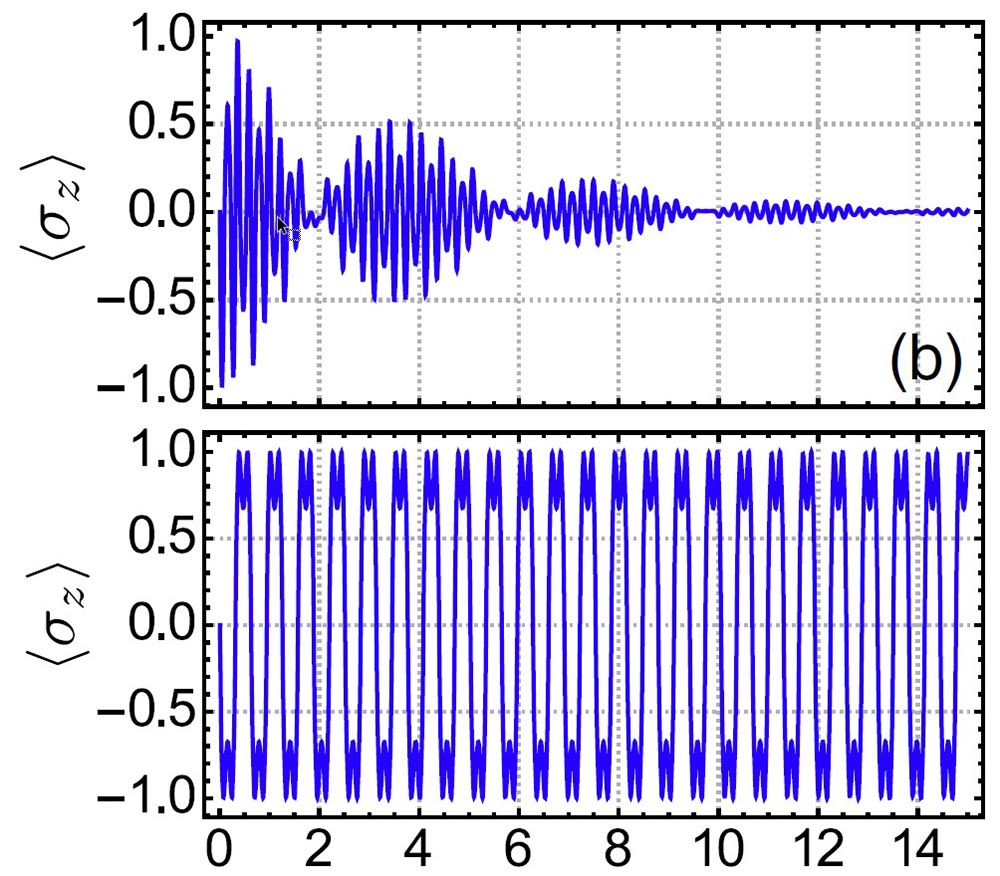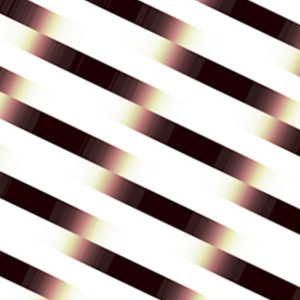Highlights
Shaking Schrodinger's cat may protect it from the environment

CQT's Dimitris Angelakis (left) and Victor Bastidas (right) with collaborators in Germany found a new way to simplify the equations for a driven quantum system, leading to the discovery that driving can protect a quantum state from decoherence.

The figure shows the calculated behavior of qubit states for different amplitudes of external driving potentials. In the bottom panel, the state is protected from decoherence. Credit: Physical Review Letters 117, 250401 (2016).
Pity poor Schrodinger's cat. As if it weren't enough to wish a cat into a state of being simultaneously dead and alive, physicists now have an idea for how to keep it that way – and the answer is to shake it.
The finding comes from CQT's Victor Bastidas and Dimitris Angelakis with collaborators at the Technische Universität Berlin, Germany, thanks to new maths for describing the interaction of a driven quantum system with its environment. This is a field of study known as Floquet dynamics. The work was published in Physical Review Letters.
Saving the cat
Typically you expect a quantum state to 'decohere' when it's in contact with the environment – the information leaking out through interactions, until the quantum superposition is lost. "This kind of saves the cat from its dual existence, but it also makes constructing quantum computers hard," says Victor.
What they found is that shaking – driving – a system's energy levels in just the right way can protect the state from the environment. As with Schrodinger's thought experiment, the results do not apply to real cats, but to smaller quantum systems such as single atoms, spin systems or optomechanical resonators.
Being able to protect quantum states could be useful in quantum devices, and the team hope to work with experimental scientists to test their ideas.
Driving a system is similar to pushing a person on a swing – putting energy into the system at just the right moments will keep the swinging motion going. Quantum systems can be driven by applying a changing external magnetic field, for example. But what are the effects?
A brilliant solution
"This calculation is hard to do analytically. In most previous works, you forget about the environment and just look at the system," says Dimitris. Physicists were calculating how information would leak out, but not what happened to it then. In this picture, the quantum states decohere.
Victor had the idea to try to analyse the environment too as he finished up a postdoc in the group of Tobias Brandes* in Berlin. He moved to Singapore to join Dimitris' group at the end of 2015, starting the collaboration on this project. Dimitris is also appointed at the Technical University of Crete, Greece.
The breakthrough came when student Sebastian Restrepo in Berlin found a way to simplify the combination of equations describing the quantum state, the environment and the driving potential. An unexpected symmetry in the equations meant that lots of complicated terms cancelled out – making them possible to solve. "It's a brilliant solution," says Victor.
Unexpectedly, these simplified equations show there exists an external driving potential that keeps the quantum state fixed, even as it interacts with the environment. Such a driving may come from, for example, an external magnetic field pulsed at just the right frequency.
The team interpret the state's longevity as an interference effect: information leaking out of the state interferes with information flowing back, to zero net effect.
*Tobias Brandes sadly passed away on 2 February 2017







